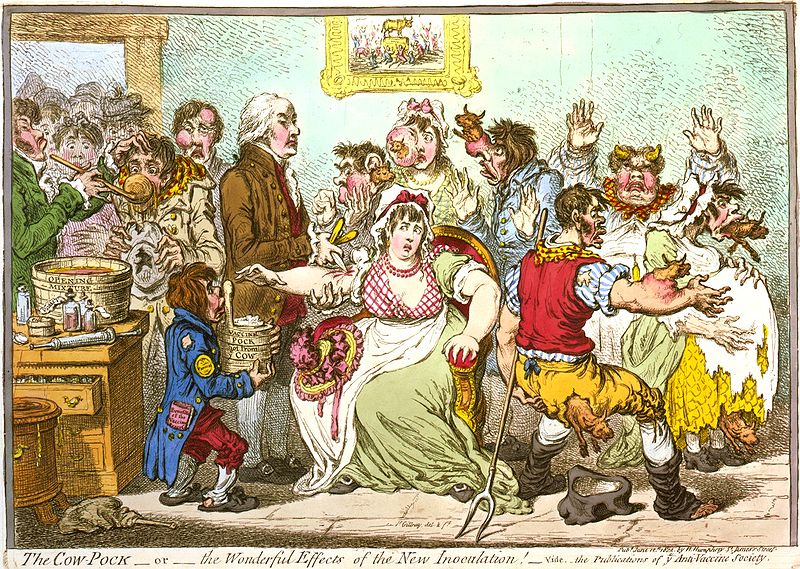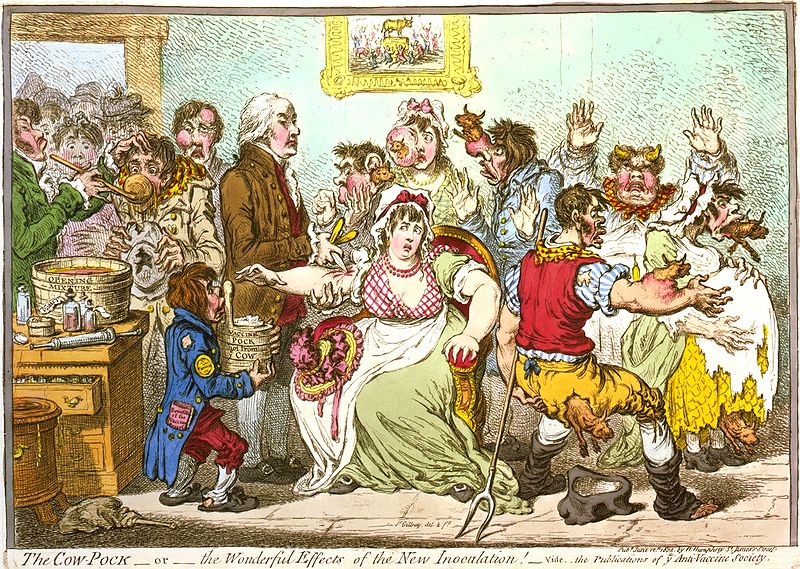On Monday morning, NPR listeners in Massachusetts caught wind of what I feel is (and continues to be) fascinating news. In and around my relatively well-educated hometown in western Massachusetts, the population of individuals choosing not to receive vaccinations is growing—having now reached three times the state average.
 Andrew Wakefield, fresh on my mind since Monday (see “Marc Hauser’s new book, and what makes a good scientist go bad”), immediately came to mind. I wondered, is he to blame for all this, for the reemergence of measles in the US and UK?
Andrew Wakefield, fresh on my mind since Monday (see “Marc Hauser’s new book, and what makes a good scientist go bad”), immediately came to mind. I wondered, is he to blame for all this, for the reemergence of measles in the US and UK?
I spoke to Dr. Amesh Adalja, who is a Senior Associate at the University of Pittsburg Medical Center for Health Security, and who is currently researching, among other things, emerging infections and pandemic preparedness.
 Adalja plainly told me that the anti-vaccine movement has existed since the invention of the vaccine itself by Edward Jenner in 1798. Adalja even recalled the satirical folklore that accompanied that invention; exposing patients to cowpox, which provided immunity to smallpox, was once joked/believed (probably both) to result in the growth of cow limbs. And yes, you read that correctly!
Adalja plainly told me that the anti-vaccine movement has existed since the invention of the vaccine itself by Edward Jenner in 1798. Adalja even recalled the satirical folklore that accompanied that invention; exposing patients to cowpox, which provided immunity to smallpox, was once joked/believed (probably both) to result in the growth of cow limbs. And yes, you read that correctly!
Despite the vaccine working, it, like today, did not come without fierce, indefensible, criticism. A little history, courtesy of the NIH:
“Jenner built a one-room hut in the garden, which he called the ‘Temple of Vaccinia,’ where he vaccinated the poor for free. After a decade of being honored and reviled in more or less equal measure, he gradually withdrew from public life and returned to the practice of country medicine….”
 Such denouncing continues today. Paul Offit, one of the scientists behind the creation of the rotavirus vaccine, received death threats when he published his book defending childhood vaccinations in 2008.
Such denouncing continues today. Paul Offit, one of the scientists behind the creation of the rotavirus vaccine, received death threats when he published his book defending childhood vaccinations in 2008.
What’s behind all this? Dr. Adam Ruben, a molecular biologist helping to develop the world’s first malaria vaccine and a former Lecturer at Johns Hopkins University who taught a course called “Public Perception of Science,” points out what is, perhaps, the very essence of the problem.
“Vaccines are a natural magnet for distrust,” he tells me, “It’s something you’re administering to a person when that person is not yet sick, and so there’s something that feels innately wrong about doing that…especially if the person is not yet sick with a disease that you have never known anybody to have … especially when you have a healthy child.”
Andrew Wakefield isn’t necessarily to blame, but as Adalja points out he has, unfortunately, fueled the skepticism—as is the case each time a scientist is found to have swayed results in favor of his or her personal gain. More than anything else, science’s reputation, especially to those who don’t work in the field, is always on the line.
“When most people hear about a scientific controversy or bad practice, they don’t have as much on the other side [of the argument] to balance it out,” Ruben tells me, “If I hear about one study that turns out to be problematic, I’m regularly thinking about the thousands, the 10s of thousands, the 100s of thousands of other studies that are not problematic. It seems like a decent, and expected, error rate. But when there’s one study that is problematic and gets a lot of publicity, I think a lot of people hear that and say to themselves, ‘Boy, these scientists don’t know what they’re doing.’ ”


